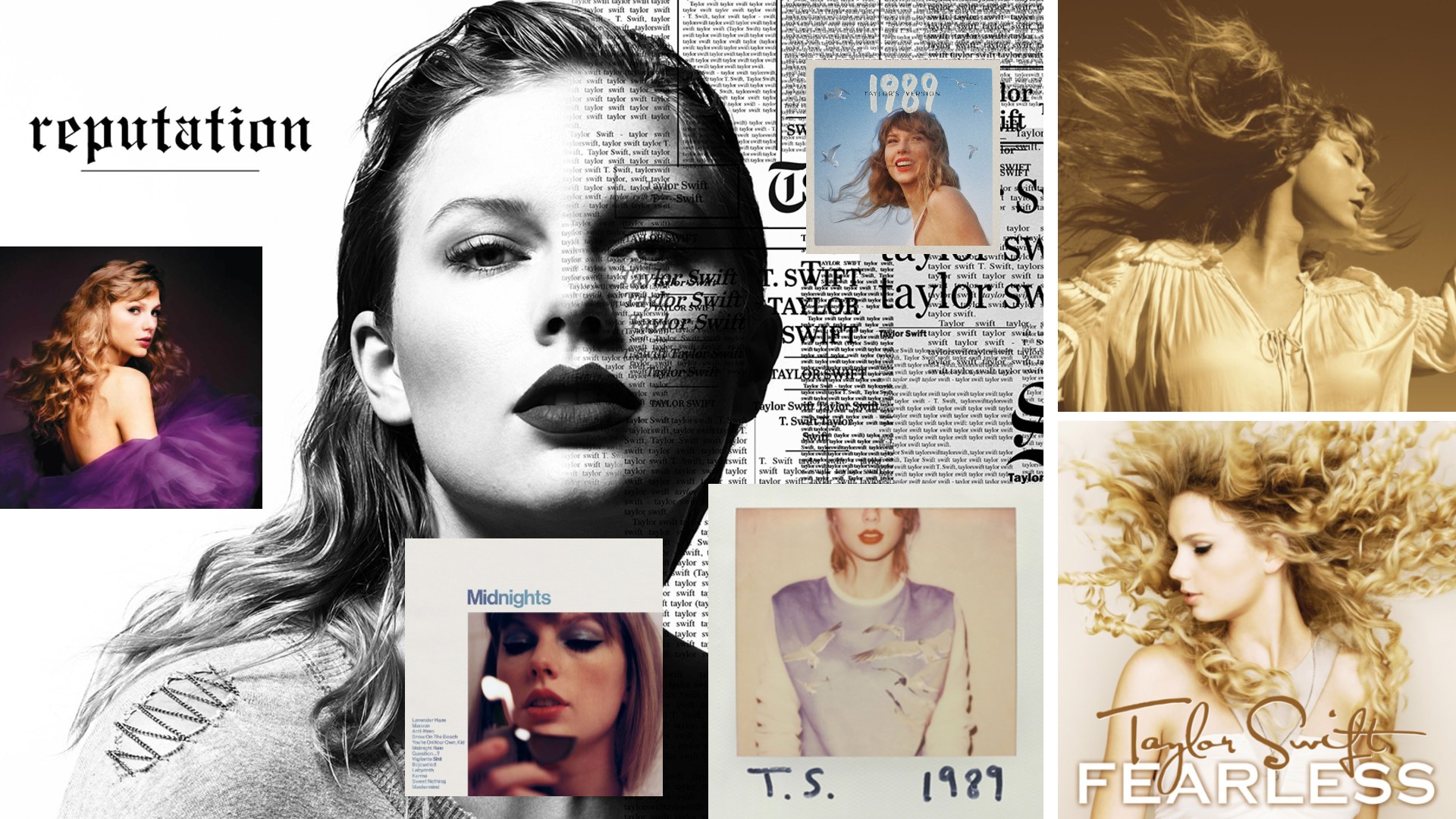How ILM brought The Last Jedi to life
Discover the secrets behind big VFX and stunning creatures.
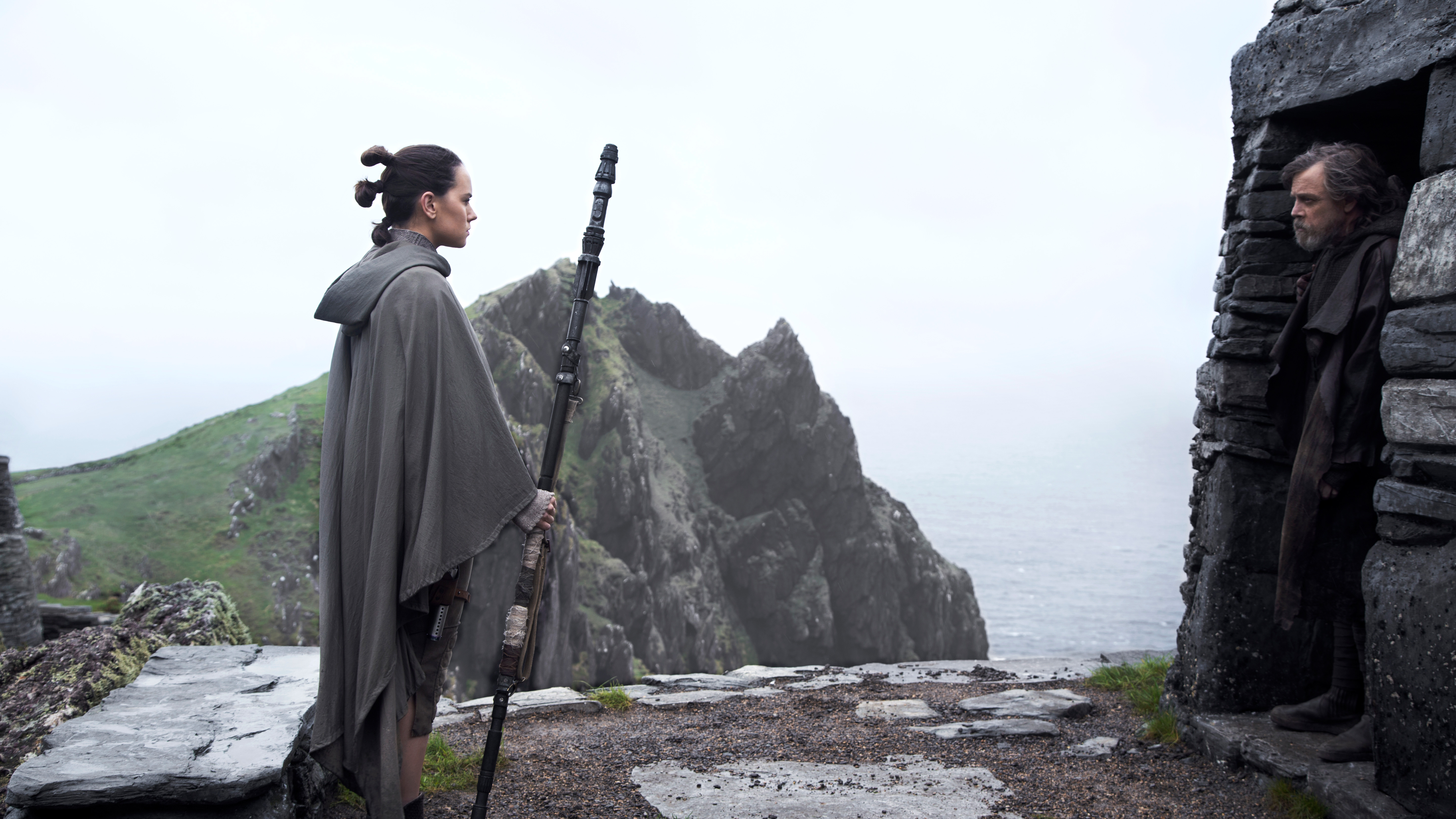
In the lead-up to the release of Rian Johnson’s much-anticipated The Last Jedi, the filmmakers were tight-lipped on what secrets were in store from the newest Star Wars film. But 3D World managed to get access to visual effects supervisor Ben Morris from Industrial Light & Magic (ILM), who shared his experience of overseeing the film’s massive VFX effort.
Here, Morris breaks down how ILM’s visual effects crew helped realise The Last Jedi’s beloved porgs, what went into the motion capture and CG for Andy Serkis’ evil Snoke, powering up the Millennium Falcon, generating lightsaber effects, and dealing with Luke Skywalker’s mechanical hand.
The Falcon takes flight
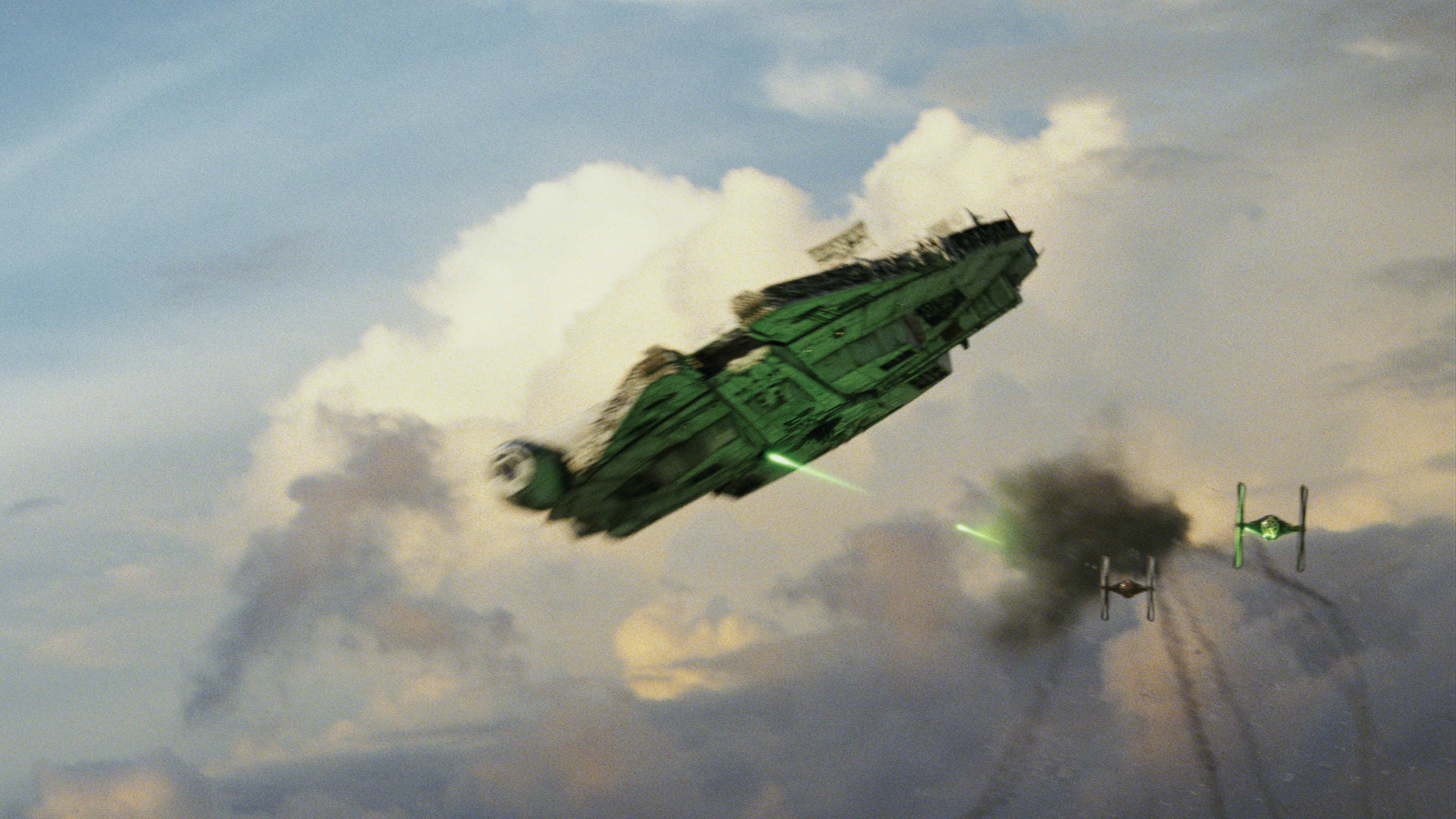
One of the ‘characters’ featured in The Last Jedi is of course the iconic Millennium Falcon, this time piloted by Chewbacca and Rey (sometimes with a little help, or distraction, from the adorable porgs). In the original Star Wars trilogy, the Millennium Falcon was of course a miniature ship shot via motion control on bluescreen and optically composited into star fields and space battles. Now it is a completely digital creation, although cockpit interiors did rely on a partial set filmed at Pinewood Studios near London.
Because the Falcon has seen so much screen time in the Star Wars films, Morris was always able to find some kind of suitable reference when it came to depicting the flying scenes for The Last Jedi. “We would always reference what’s happened in the previous films,” he says. “Actually, per ship, when we’re doing these films we’ve got the best of every shot with an X-wing, and then Star Destroyers and the Falcon. When the artists start these sequences they actually sit and review those endlessly and talk about what’s good and bad, because you’ve just got to learn how to do it.”
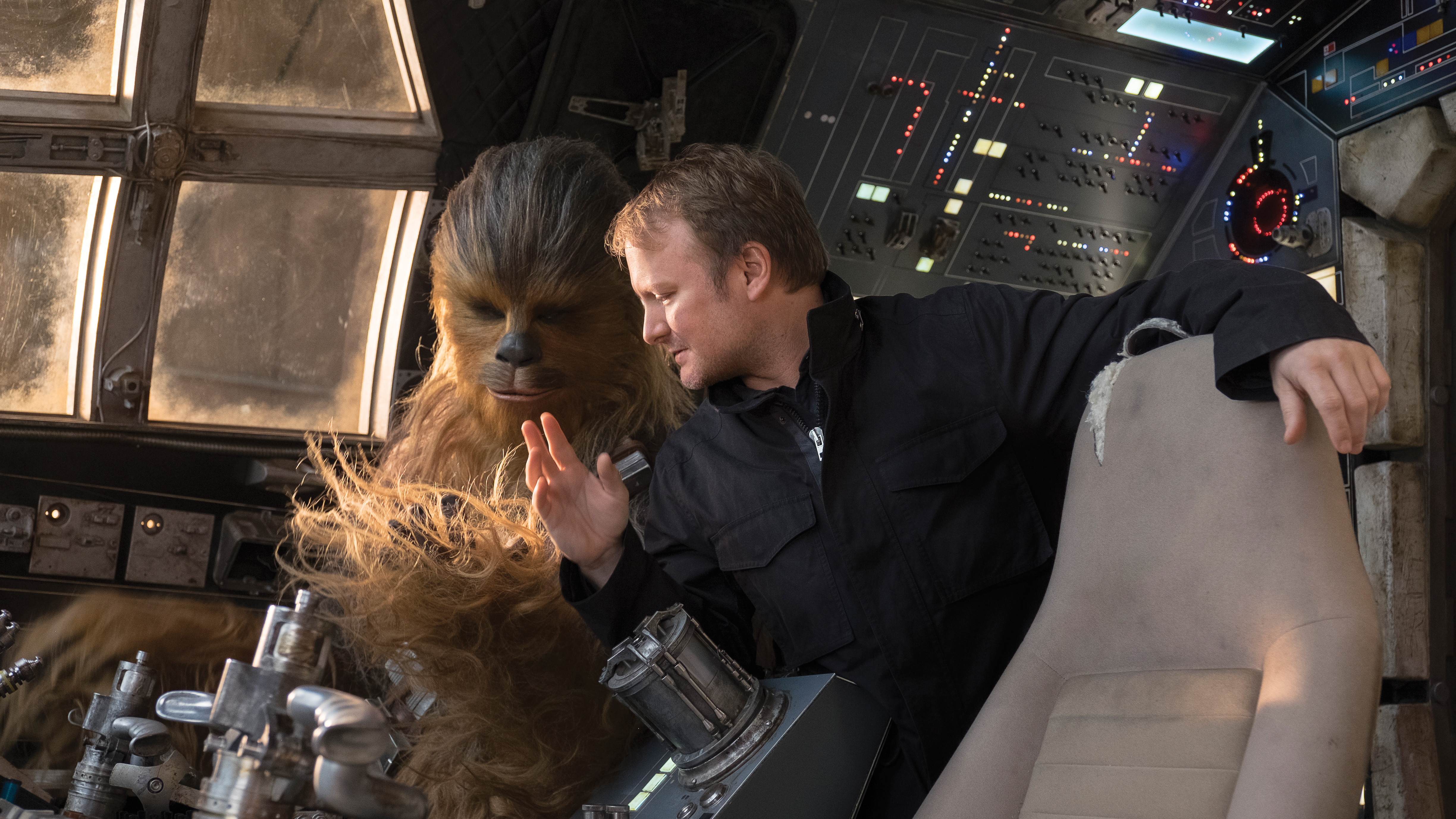
ILM also had the benefit of hearing directly from those who had worked on the original trilogy, including senior visual effects supervisor Dennis Muren. “Periodically Dennis would sit in on reviews because he’s got an overview of the whole franchise,” says Morris. “He would tell us some old stories and give us some advice on how he shot things in certain ways.”
This actually provided the team with some interesting lessons about the manoeuvrability of the Falcon, despite the then primitive controls available from the model movers and motion control cameras back in the day. “The thing that I always take away from the Falcon is that, even in space, it flies as if it has air dynamics on it,” observes Morris. “There’s banking and skidding and swerving. It’s like a huge skimming stone. As long as you play it that way with the sculpt of the ship and its trajectories, then your animation will be right.”
Indeed, the Millennium Falcon shots were among the most sought-after at ILM. It was, according to Morris, “like a rugby scrum, a punch-up” in terms of artists from the visual effects studio’s various offices requesting to work on Falcon shots (the fi lm was shared amongst ILM’s facilities in London, San Francisco, Vancouver and Singapore, with contributions from other VFX studios as well). “Everybody wanted their hands on the Falcon,” says Morris.
Get the Creative Bloq Newsletter
Daily design news, reviews, how-tos and more, as picked by the editors.
How to make a porg
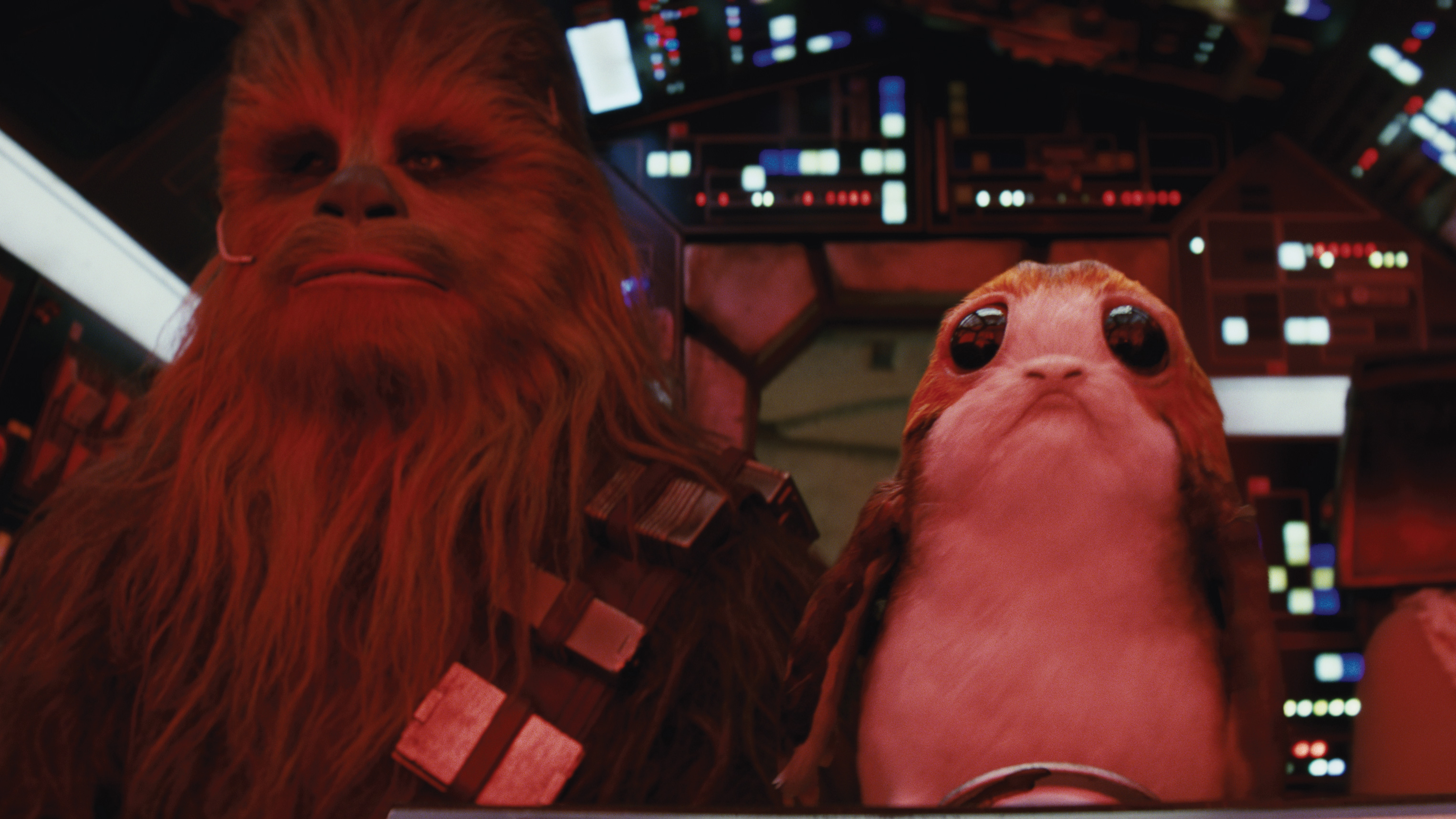
Months before The Last Jedi hit the screens, one kind of character was already an audience favourite: the porgs. These birds from the island of Ahch-To, where Luke Skywalker has been in seclusion, captured the imagination of many. Interestingly, the birds were originally intended to be only physical puppets crafted by creature effects supervisor Neal Scanlan, but ultimately were also built in CG.
“We had animatronics capable of specialist actions, like flying on cables or others that were radio controlled for background scenes,” says Morris. “We went through the whole live action shoot and then when we got into the edit there were a few shots where we thought we could do some more actions.”
To build a 3D version, ILM photographed and scanned Scanlan’s practical porgs, taking care to represent every single detail right down to the feathers. “There’s a very specific way around the back of their heads that the feathers look and all of that was completely copied in the CG version,” says Morris. “The things that we took beyond what the animatronic had were mouth interiors with tiny little teeth and being able to articulate the tongue.
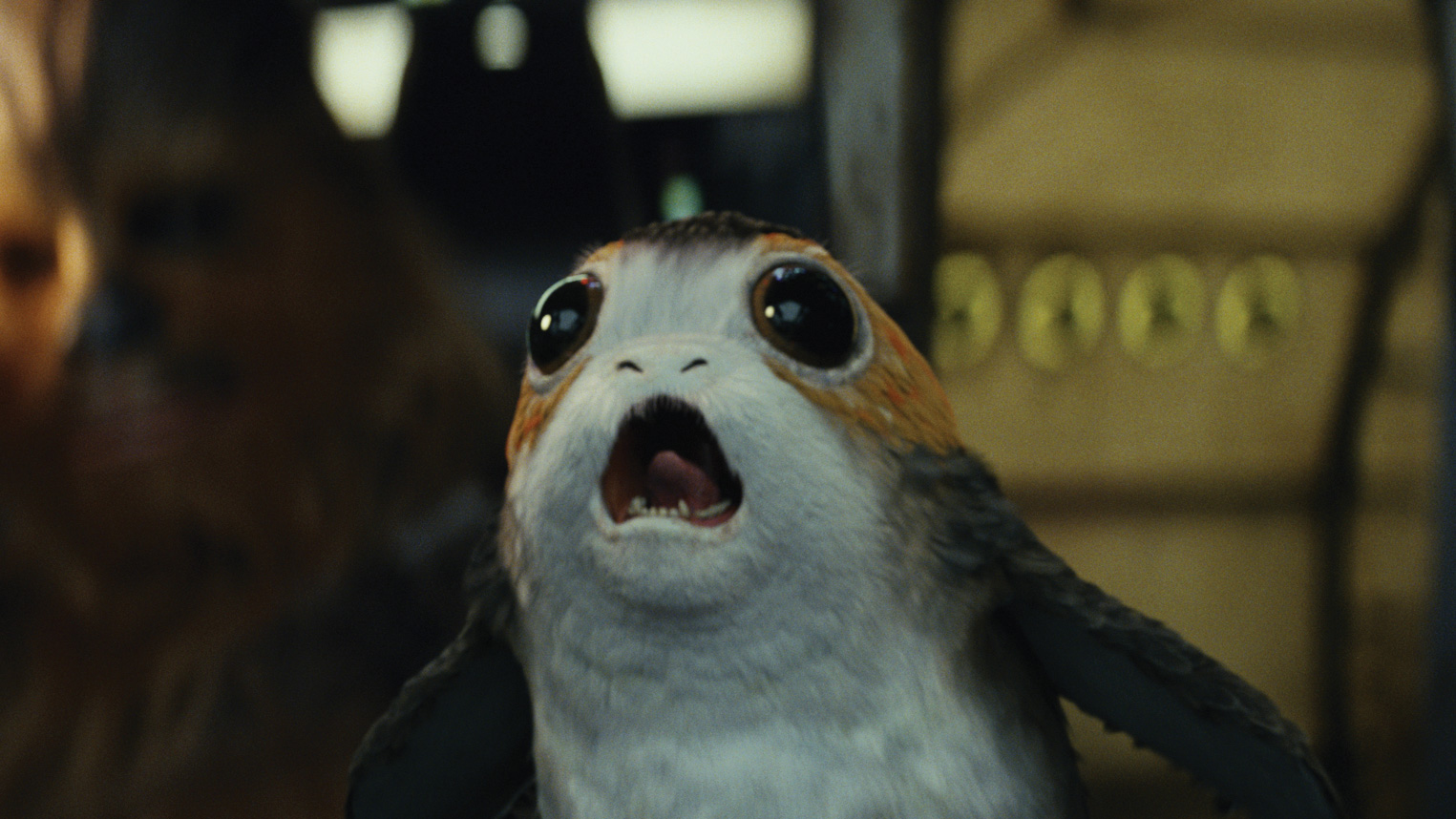
“We also controlled the eyelids,” adds Morris. “The balls of the eyes were so huge and so cute that Neal and the guys didn’t even attempt to do an eye close. They did do a very slight eye direction movement but it was more like a bevelling of the outer rim. So in some of the shots we managed to work out how to make them blink. It was actually incredibly hard, because it’s such a huge ball that you actually have to stretch and ease the falloff of the feathers all the way down as you get a blink.”
Despite the obvious flexibility that digital porgs could bring to the shots, Morris notes that the director still wanted to ensure the ‘puppet’ feel of the creatures remained. “Rian loves puppets and so although we had the opportunity to make these guys do the cancan and dance and do anything we wanted, he wanted us to stay grounded in the animation. He wanted it to look and feel and have the limitations of a practical puppet but he also wanted just that bit more movement range. Any time we went too far he’d say, ‘This isn’t a cartoon.’”
Snoke re-surfaces
In The Force Awakens, Supreme Leader Snoke appeared only as a projected CG hologram, 25 feet tall. But in The Last Jedi, he is a living breathing character, which required a re-working by ILM of its digital model and approach to capturing Andy Serkis, who lent his motion capture expertise and voice to Snoke.
In fact, this time around Snoke would be brought to life via multiple methods. First, Scanlan’s team provided a maquette of the character to be used on set as reference. After determining that Snoke’s height would reach eight feet, stand-in actors were also relied upon during filming, one wearing a golden kimonolike costume that ILM eventually reproduced digitally.
An older actor with appropriately wrinkled skin also served as lighting and skin reference. Then Serkis himself, wearing an ILM iMocap suit fitted with active LED markers and a facial capture four-camera headset, also performed the role, occasionally standing on a platform when necessary. Three RED witness cameras were also aimed at the actor for some extra additional coverage.
ILM re-worked its original Snoke model for extra detail, also placing Serkis inside a Medusa Performance Capture Rig, which had been developed by Disney Research for high-res scans. As shots progressed, the VFX team ran into a unique dilemma brought on by a combination of the voice Serkis had provided and the character’s facial features, as Morris explains.

“Rian came to me one day, he’d been watching Andy in the editorial cutting rooms for three or four months and had grown very accustomed to Andy’s voice, which was incredibly deep and resonant and quite powerful. But we had this very wasted, slightly thin gaunt sculpt in the maquette which we had replicated in CG. And it just didn’t add up. You hear this voice and you see this face, and you even look at the voice box and the structure of the chest anatomy and it just felt like it should be a little more raspy – it was such a tiny creature and yet here was this bombastic bad guy."
“So,” continues Morris, “Rian came to me and said, ‘What are we going to do about this?’ And I said, ‘Okay, we’ll have to think about how we re-design him slightly.’ And so we looked at some other actors who have got quite striking faces, people like Michael Fassbender, Terence Stamp and Ben Kingsley.“
“What we decided was that the overall structure was okay but we made Snoke’s jaw far heavier-set and broadened him out. We gave his shoulders a far broader setting with an inflated sternum in his chest. And almost immediately Rian got far more comfortable with it.”
The visual effects artists also had to simulate Snoke’s clothing, made up of a long fl owing coat, and then deal with his wrinkly skin and disfigurement. “We looked at how men’s faces can change as they get older and have things like weeping eyeballs and lower lids,” describes Morris. “Then we had that dried skin and sticky lips. We even showed Rian this old show called Steptoe and Son which had this hideous old character with some spiky stubble and Rian basically said, ‘Go for it.’”
A Star Wars experience
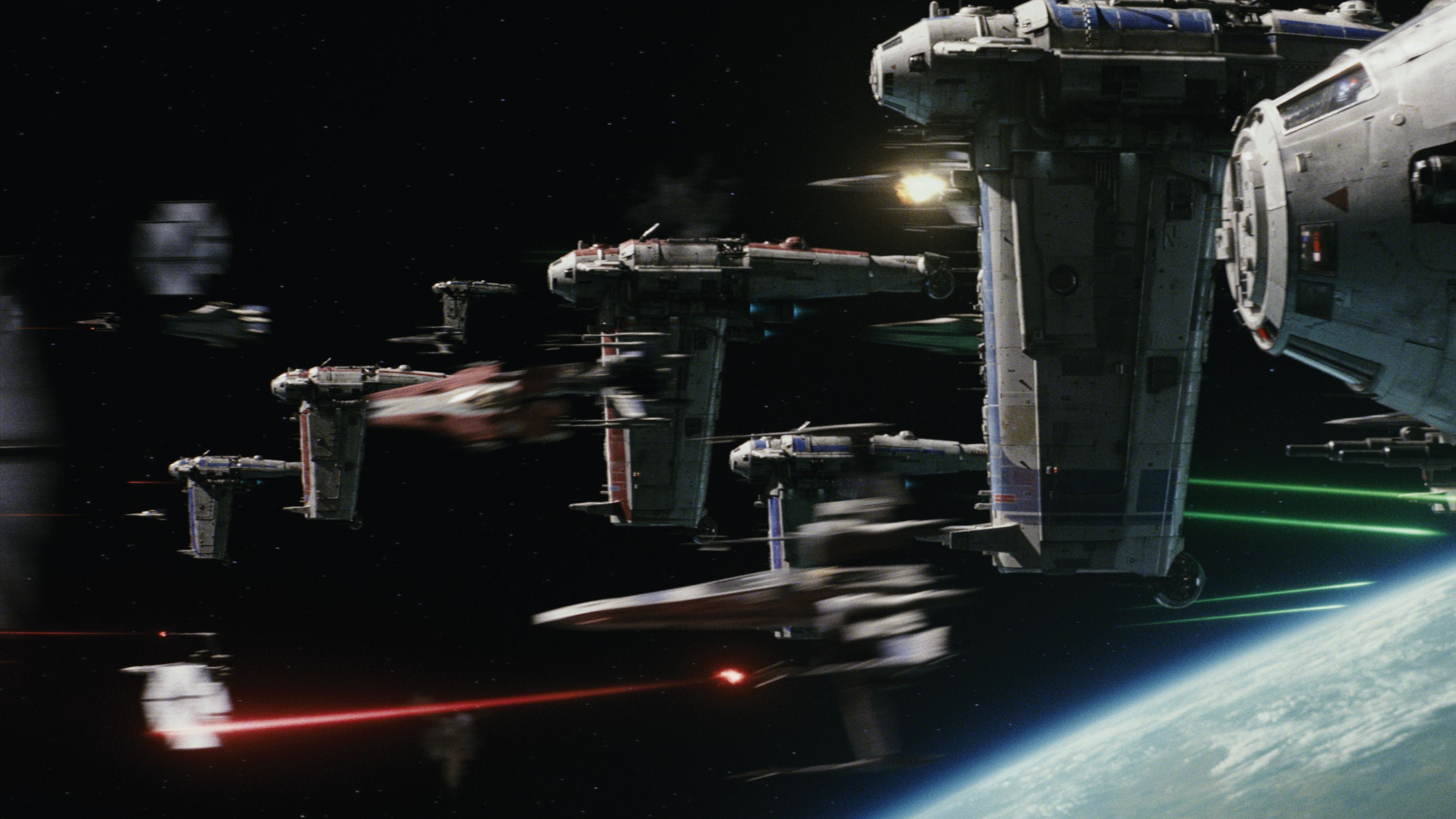
For Morris and the rest of the ILM team, The Last Jedi experience was an incredible one. The visual effects supervisor, in particular, says he owes his career to seeing the Star Wars films as a child. “If someone says to me, ‘Cite the films that have influenced you and inspired you to get into the industry,’ Star Wars is always at the top. I knew as soon as the opening scroll rolled and the Star Destroyer went over the top - I knew that that was what I wanted to do.”
Morris originally got into model and puppet making with the Jim Henson Creature Shop (where he also first met Neal Scanlan), then worked for several years in digital visual effects at Framestore before moving to ILM. He told 3D World he is particularly excited that the aesthetic in these new Star Wars films, including on The Last Jedi, was to introduce a ‘retro’ feel to the spaceships, worlds and creatures, while still relying on years of advances in visual effects.
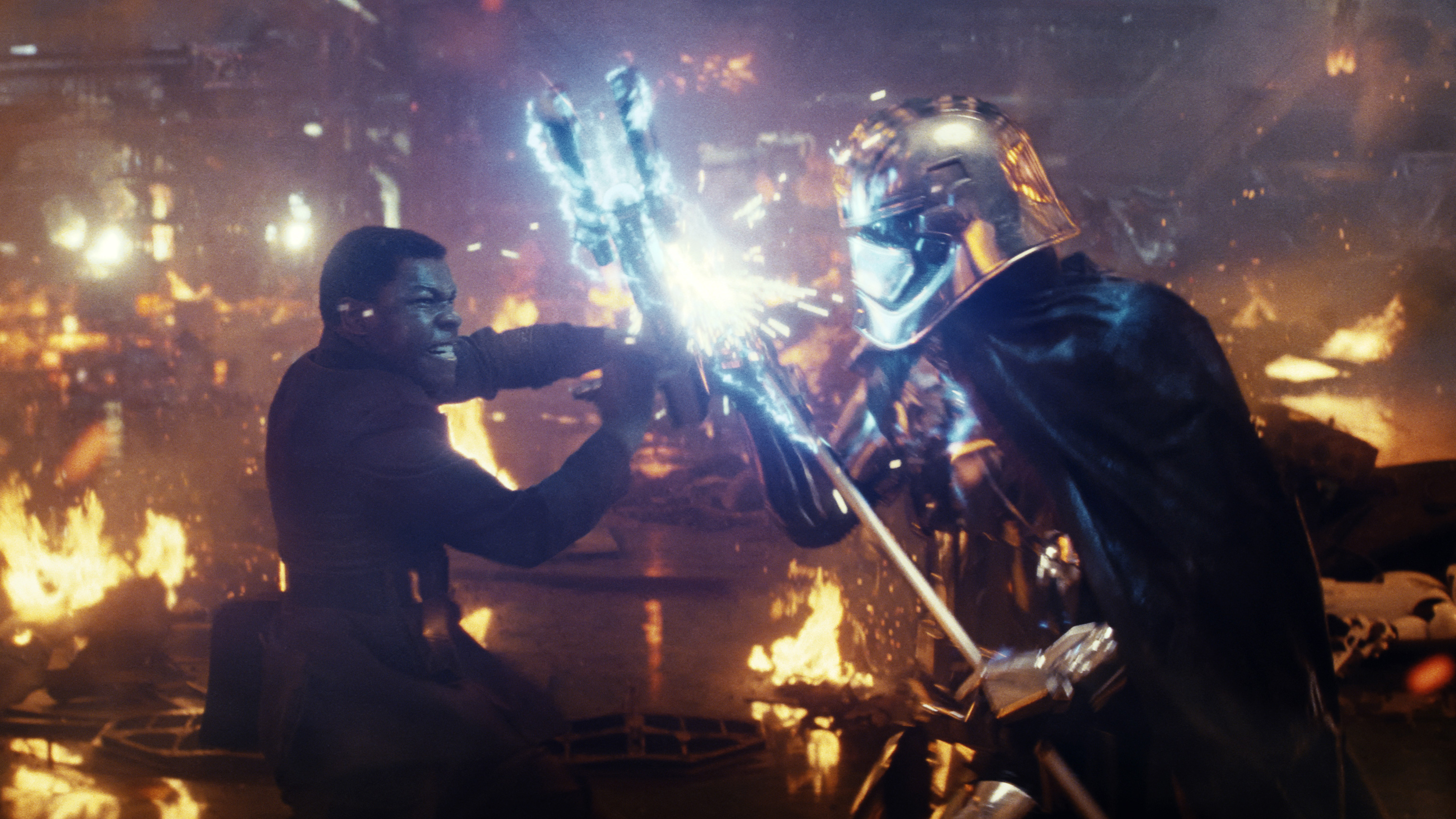
“There’s no way on Earth anyone could have made something like Snoke or the space battles that we’re achieving now,” suggests Morris. “We would have needed five years of post-production to achieve the layers and complexity that we achieve now. But I think what it always balances down to is we’re pushing the frontiers. We’re really channelling what’s so loved about Star Wars on the visual effects side.”
This article was originally published in issue 230 of 3D World, the world's best-selling magazine for CG artists. Buy issue 230 here or subscribe to 3D World here.
Related articles:

Thank you for reading 5 articles this month* Join now for unlimited access
Enjoy your first month for just £1 / $1 / €1
*Read 5 free articles per month without a subscription

Join now for unlimited access
Try first month for just £1 / $1 / €1

Ian Failes is a VFX journalist, who has written for a number of creative titles, including fxguide, Cartoon Brew, VFX Voice, 3D Artist, 3D World, Thrillist, Syfy, Inverse, Digital Arts, MovieMaker, Empire Magazine Australia, Develop, Rolling Stone and Polygon. Ian now runs befores & afters, a brand-new visual effects and animation online magazine.
